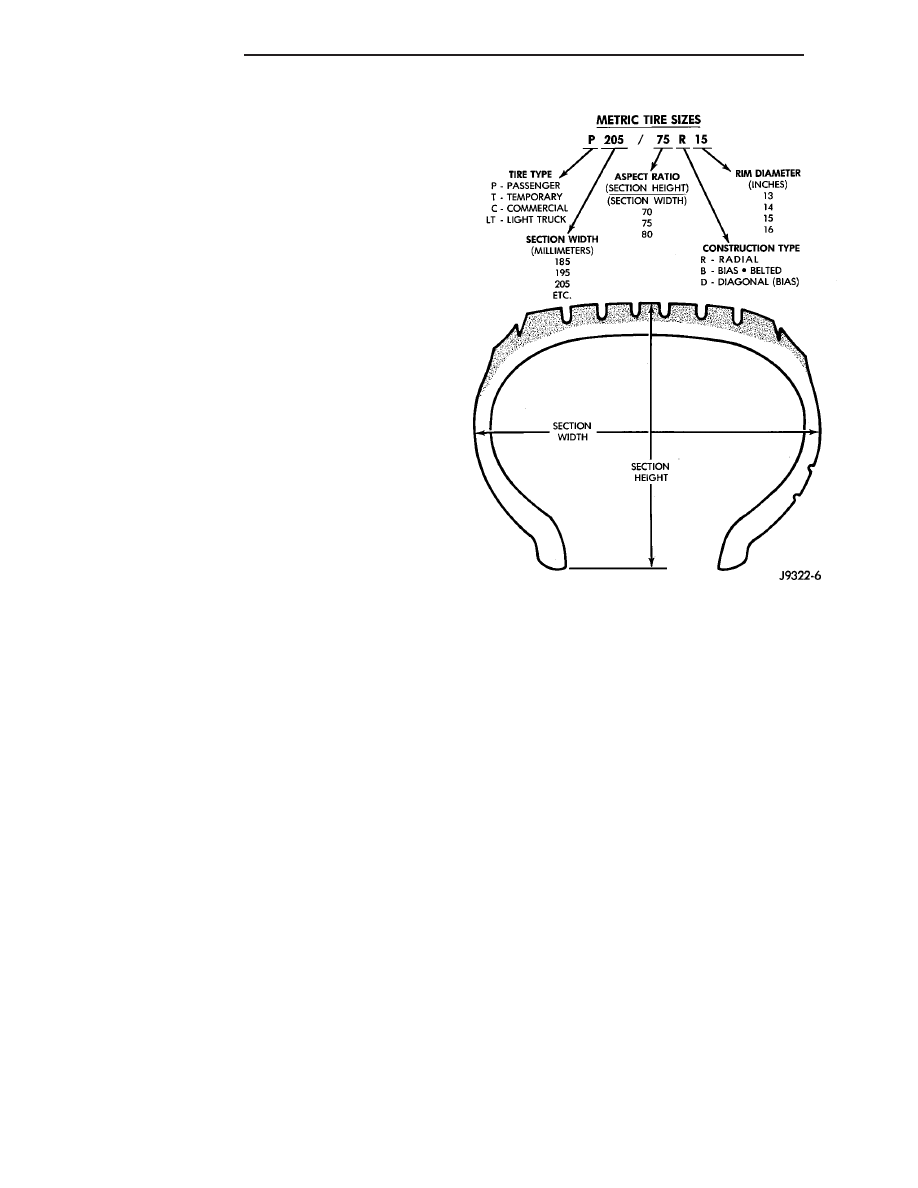Chrysler PT Cruiser. Manual - part 883

TIRES
DESCRIPTION
DESCRIPTION - TIRE
Original equipment tires are designed and engi-
neered for each specific vehicle. They provide the
best overall performance for normal operation. The
ride and handling characteristics match the vehicle’s
requirements. With proper care they will give excel-
lent reliability, traction, skid resistance, and tread
life.
Driving habits have more effect on tire life than
any other factor. Careful drivers will obtain, in most
cases, much greater mileage than severe use or care-
less drivers. A few of the driving habits which will
shorten the life of any tire are:
• Rapid acceleration
• Severe application of brakes
• High-speed driving
• Taking turns at excessive speeds
• Striking curbs and other obstacles
• Operating vehicle with over or under inflated
tire pressures
Radial ply tires are more prone to irregular tread
wear. It is important to follow the tire rotation inter-
val shown in the section on Tire And Wheel Rotation.
This will help to achieve a greater tread-life poten-
tial.
TIRE IDENTIFICATION
Tire type, size, aspect ratio and speed rating are
encoded in the letters and numbers imprinted on the
side wall of the tire. Refer to the figure (Fig. 16) to
interpret the tire identification code.
Performance tires will have a speed rating letter
after the aspect ratio number. For example, the letter
“S” indicates that the tire is speed rated up to 112
mph (180 km/h). The speed rating is not always
printed on the tire sidewall.
• Q - up to 100 mph (160 km/h)
• S - up to 112 mph (180 km/h)
• T - up to 118 mph (190 km/h)
• U - up to 124 mph (200 km/h)
• H - up to 130 mph (210 km/h)
• V - up to 149 mph (240 km/h)
• Z - more than 149 mph (240 km/h) (consult the
tire manufacturer for the specific speed rating)
An All Season type tire will have either M + S, M
& S or M-S (indicating mud and snow traction)
imprinted on the side wall.
TIRE CHAINS
Refer to the owners manual supplied with the vehi-
cle to determine whether the use of tire chains is per-
mitted on this vehicle.
DESCRIPTION - RADIAL-PLY TIRES
Radial-ply tires improve handling, tread life and
ride quality, and decrease rolling resistance.
Radial-ply tires must always be used in sets of
four. Under no circumstances should they be used on
the front only. They may be mixed with temporary
spare tires when necessary. A maximum speed of 80
km/h (50 mph) is recommended while a temporary
spare is in use.
Radial-ply tires have the same load-carrying capac-
ity as other types of tires of the same size. They also
use the same recommended inflation pressures.
The use of oversized tires, either in the front or
rear of the vehicle, can cause vehicle drive train fail-
ure. This could also cause inaccurate wheel speed
signals when the vehicle is equipped with Antilock
Brakes.
The use of tires from different manufactures on the
same vehicle is NOT recommended. The proper tire
pressure should be maintained on all four tires.
Fig. 16 TIRE IDENTIFICATION (TYPICAL)
22 - 8
TIRES/WHEELS
PT